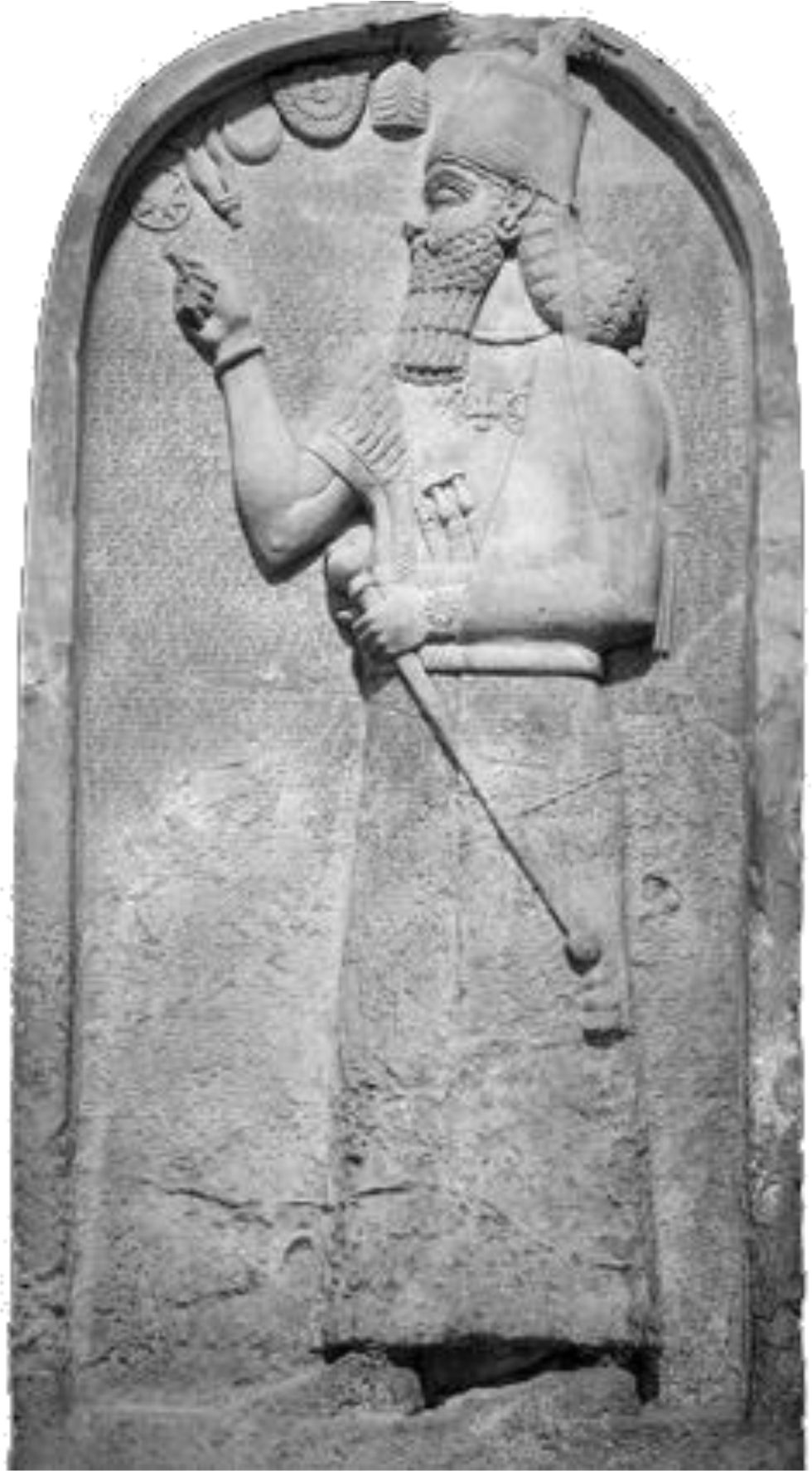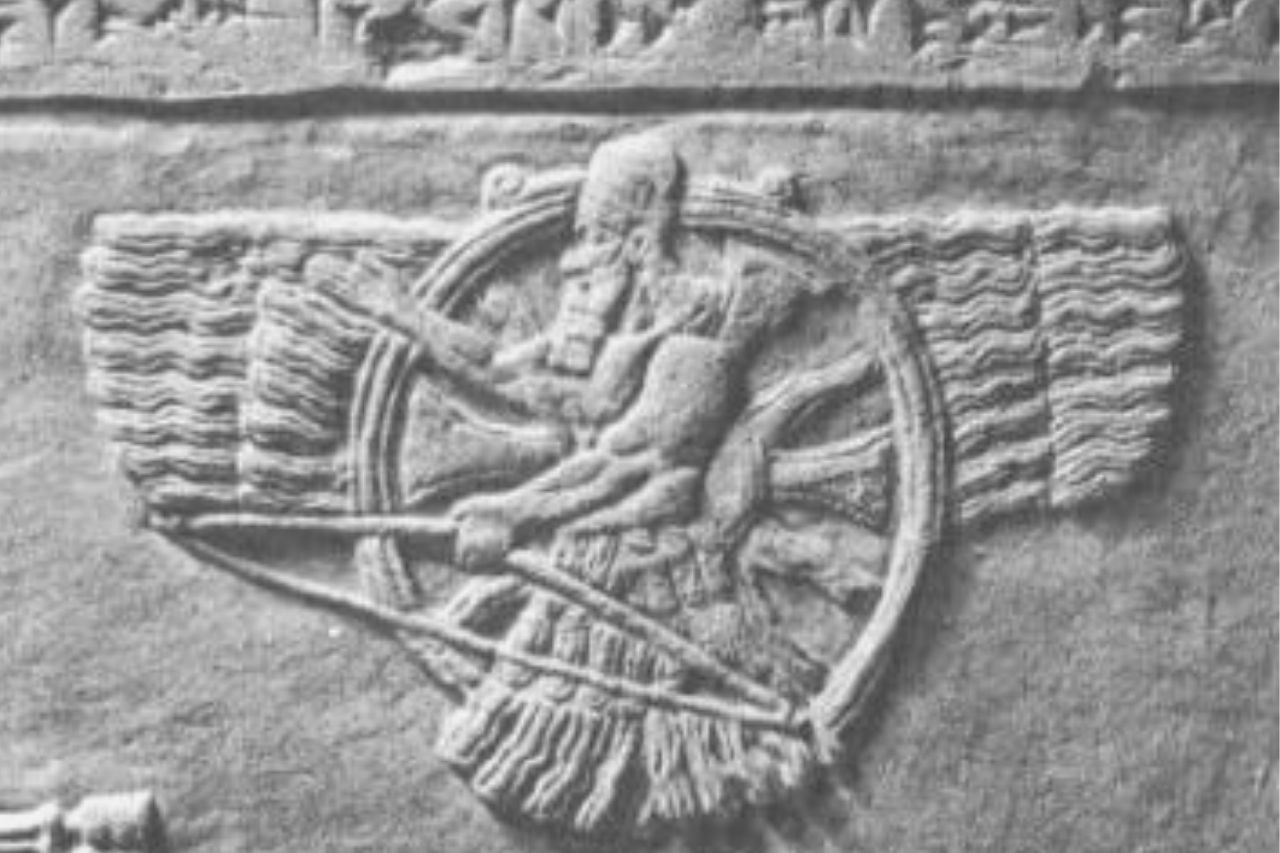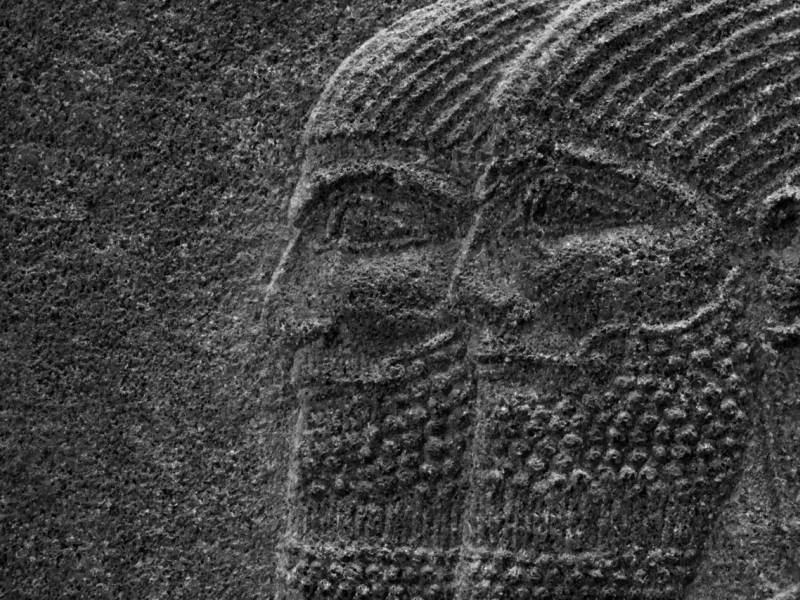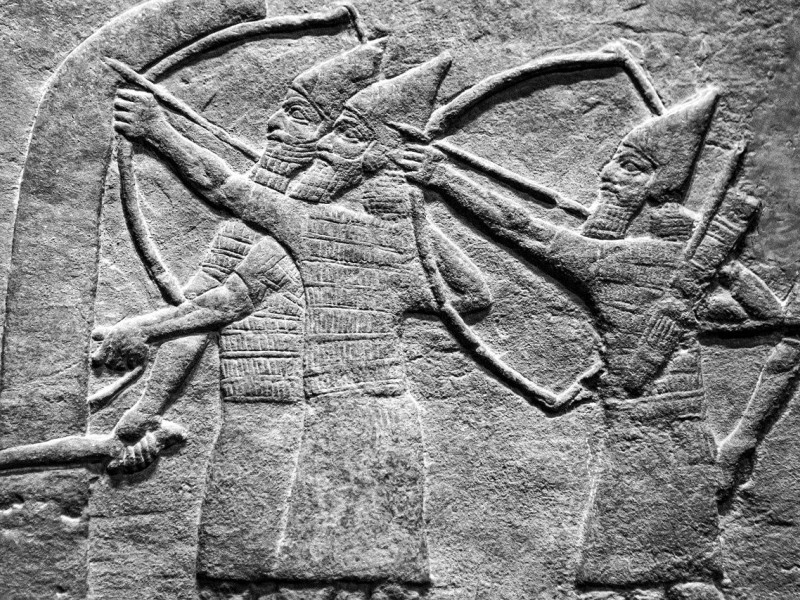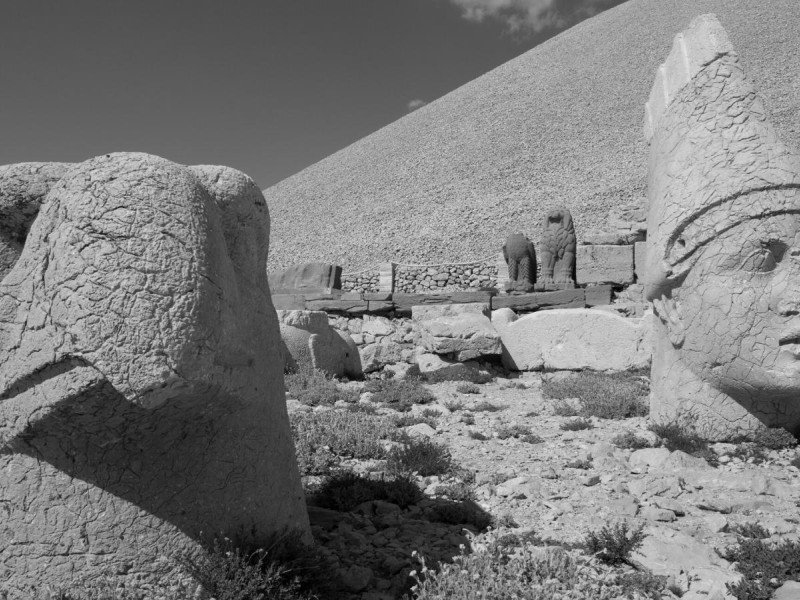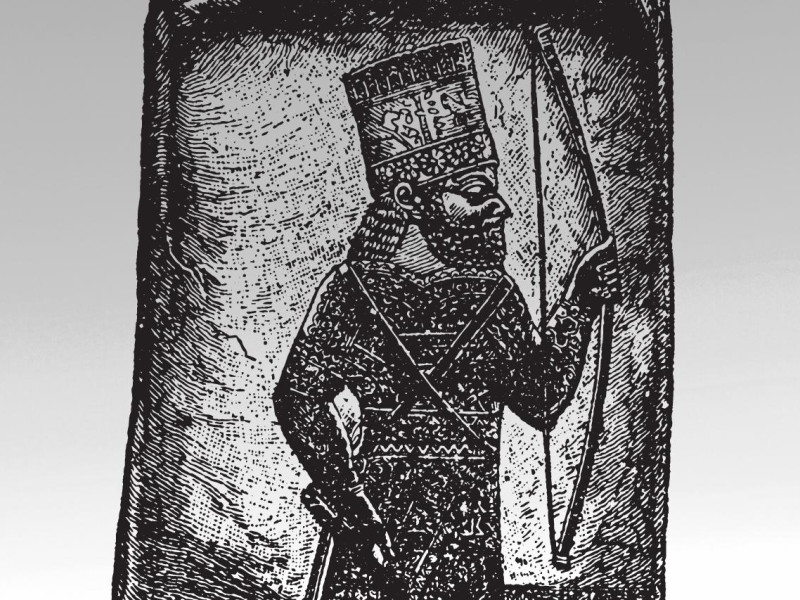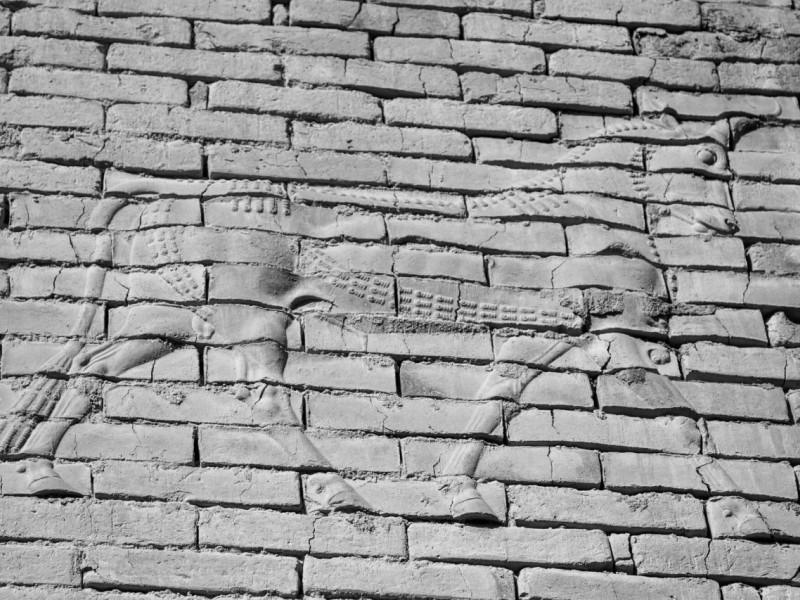Ashur: How an Agricultural God Became the Supreme Deity of Assyria
Ashur was a local agricultural deity of the Assyrian city of Assur. Over the centuries he rose to become the supreme deity of the Assyrian empire. How did this happen? Read on to discover the rise and decline of Ashur, the supreme Assyrian god.
Who Is Ashur? The Origins of The Supreme Assyrian Deity
Ashur is an Assyrian deity who began as a spirit that characterized the city of Assur. According to the legend, a man named Ashur discovered the city and named it after himself. Later, Assur became the capital of the old Assyrian Empire.
The city of Assur flourished as an agricultural community. Thus, they named the spirit that embodied the work ethic of their community after the city. That is how Ashur, the Assyrian god, was born. Scholars place the origins of the Assyrian deity around 1900 BC.
Soon, the city became an important trading post between Mesopotamia and Anatolia. This trade led to the popularity of the city Assur. As the city grew in popularity, the legend of the deity grew with it.
How Ashur Became the National Deity of Assyria
King Ushpia dedicated the first temple of Ashur around the 21st century BC. King Shamshi-Adad I oversaw the first major expansion of the city. As the city expanded, it spread the worship of Ashur. Soon the city of Assur became the capital of Assyria.
Shamshi-Adad I was an ardent follower of the god and he credited all his victories to the deity. He enlarged the temple of Ashur, included a ziggurat, and established Ashur as a national god. After the death of Shamashi-Adad I, Hammurabi, the Babylonian king, took over the reins.
Hammurabi absorbed the city of Assur into his kingdom and limited the worship of Ashur to the city. This was because Hammurabi was a Babylonian and the Babylonians worshipped Marduk. According to Babylonian tradition, Marduk was the supreme god.
Marduk was the hero in the Enuma Elish, an Egyptian epic story chronicling the events of creation. Hammurabi popularized the worship of Marduk in Assyria. Thus, Ashur went back to being a local god. After Hammurabi died in 1750 BC, chaos erupted throughout the region.
Ashur’s Elevation to the Position of Supreme God
Kings and rebels began to wrestle for control over the Assyrian nation. King Adad Nirari I defeated the warring parties and formed the first Assyrian empire. The King credited his victory to the god, Ashur. He, once again, restored Ashur’s worship throughout the kingdom. The Assyrian empire then grew in leaps and bounds.
As the kingdom grew, so did the popularity of Ashur. After the Assyrians defeated Babylon, the Assyrian scholars rewrote the creation story. They then replaced Marduk, the supreme god, with Ashur. They changed his name to Anshar and made him the hero of the epic creation story.
Thus, Ashur now became the supreme god. The Assyrian creation story narrates how Anshar (Ashur) defeated Tiamat to create humanity. Thus, Ashur was now elevated to the head of the Assyrian pantheon.
The Assyrians Promote Ashur as an Omnipresent God
The Neo-Assyrian Empire, under Sargon II, spread to other regions. King Adad Nirari II included Mesopotamia, Egypt, the Levant, and a part of Anatolia in the new empire. He made these conquests in the name of Ashur. So, King Adad Nirari II spread the worship of Ashur in these regions as well.
Ashur went to war with his subjects and ensured their victory. The Assyrians, in an attempt to spread the worship of Ashur, declared that he was omnipresent. Thus, anyone can worship him from anywhere. This notion made Ashur more popular even in faraway lands.
Ashur’s Role in the Rulership of the Assyrian Kingdom
In the ancient Assyrian religion, the king was the representative of Ashur as well as a priest. He embodied the fierce nature of Ashur and embarked on many campaigns to appease the deity. The fiercest warrior — whose persona and reign embodied Ashur — was Tiglath Pileser III. He offered regular prayers to the deity during his quest to expand the empire.
He won a lot of victories and conquered many lands in the name of Ashur. He built the first specialized army, equipped and armed to the teeth. The armies of Tiglath Pileser III were also famous for their siege engines. These engines ensured massive victory while minimizing losses.
Ashur and the Rights of Women in the Ancient Kingdom
As Ashur’s worship spread across the lands, the rights and privileges of women dwindled. A prime example was the Phoenicians who held women in high regard and revered their female gods. After the Assyrians conquered them, they forced them to adopt the Assyrian religion. This meant that women in Phoenicia lost many of their rights and their female gods lost their worship.
The Fall of Ashur and the Assyrian Empire
The spread of the worship of Ashur came to an end when the Neo-Assyrian empire fell, in 612 BC. Its last great king and the most popular was Ashurbanipal. During the rulership of Ashurbanipal, the Kingdom reached its maximum reach. For this reason, it became very difficult to govern. After the last king died, revolution broke out throughout the kingdom.
Cities conquered and ruled by the Assyrians began to rebel. This led to the breakaway of several regions. As these breakaway regions became autonomous, they reverted to worshipping their former gods. Thus, the worship of Ashur dwindled, though most Assyrians held on to him.
The Symbols and Depictions of Ashur In Ancient Art Forms
The ancient Assyrians depicted Ashur as a bearded archer with a three-point arrow. Other art forms showed the Assyrian deity holding a sun disc. Ashur had several symbols, one of which was a disc with wings and a circle, surrounded by four other circles. Another symbol was an archer with a drawn bow, enclosed by a winged wheel.
A variant of this symbol depicted him holding an arrow in his left hand. He stretched his other hand as if to bless his subjects. The most common and indigenous symbol of Ashur was a winged disc.
Scholars believe that the bearded warrior and the drawn arrows were added later. The addition was to express the fierceness of the Assyrian warriors. The winged disc represents the sun and shows Ashur’s divinity and prowess.
The Story of the Tree of Life and the Role of Ashur
The tree of life is a tradition that has its roots in ancient mythology. It represents life and has various meanings depending on the culture. In Assyrian mythology, the tree of life had the symbol of Ashur hovering over it. This signified the power of Ashur as the giver of life.
This depiction is also the equivalent of Ein Sof, who was god before he took on any form. The phrase refers to the originality of God and also means the “endless one”. This implies that Ashur existed long before creation, according to Assyrian mythology.
Modern Representation of Ashur Among the People of Assyria
While Assyria is non-existent as a state, some descendants of Assyrians still identify with Ashur. He is still regarded as the national deity. Though most Assyrians are Christians, they have a deep reverence for Ashur. Thus, they include the deity in a variant of the Assyrian flag. The flag shows Ashur as a warrior at the top, with a drawn bow and arrow.
The Family of Ashur: His Wife and Children
Ashur did not have a family of his own due to his divine origins. Thus, most scholars at the time “gave” him a family, as was common with other gods of his era. According to the Assyrian religion, he inherited Nilil, the wife of Enlil, as his wife. Nilil’s name was later changed to Mullissu by the Assyrian scholars to fit their culture.
According to the narrative, Ashur also adopted two sons, Ninurta and Zababa. Ninurta and Zababa originally were the sons of Enlil and Nilil.
Conclusion
We’ve gone through the life cycle of Ashur, the myths and symbols surrounding him, and the history of his worship. Let’s sum up all that you have read so far.
Ashur is a local god that embodied the city of Assur
The legend of Ashur became more popular as the city expanded due to trade
King Ushpia consecrated the first Ashur temple in the 21st Century BC
Assyrian kings spread the worship of Ashur through their conquests
The Assyrians promoted Ashur as an omnipresent god
Assyrian scholars then replaced Marduk (the supreme god) with Ashur
Thus, Ashur became the supreme god throughout the empire of Assyria
The worship of Ashur dwindled as the Neo-Assyrian empire collapsed
The Christianization of Assyria also led to the collapse of the worship of Ashur. The Christian missionaries taught that their God was omnipresent. This fed into the Assyrian narrative of an omnipresent Ashur. This made it easy for the Assyrians to identify with the God of the Christians, as it shared some fundamental characteristics with the “new” god.

